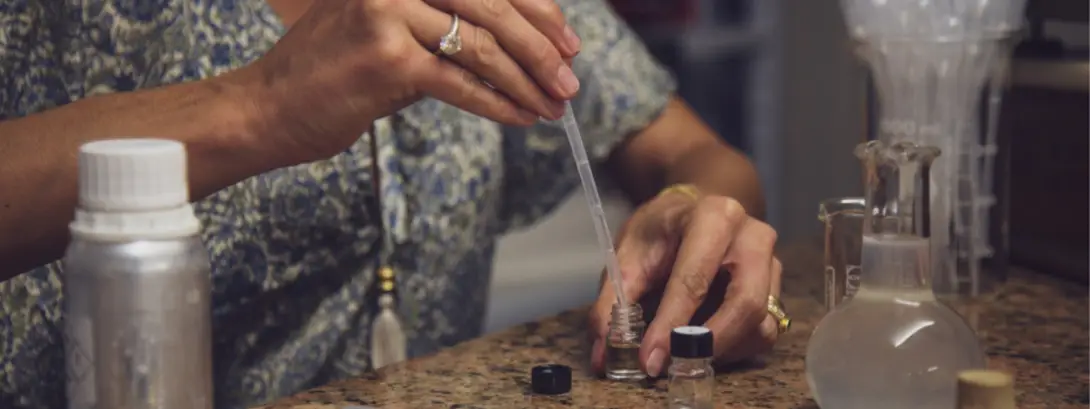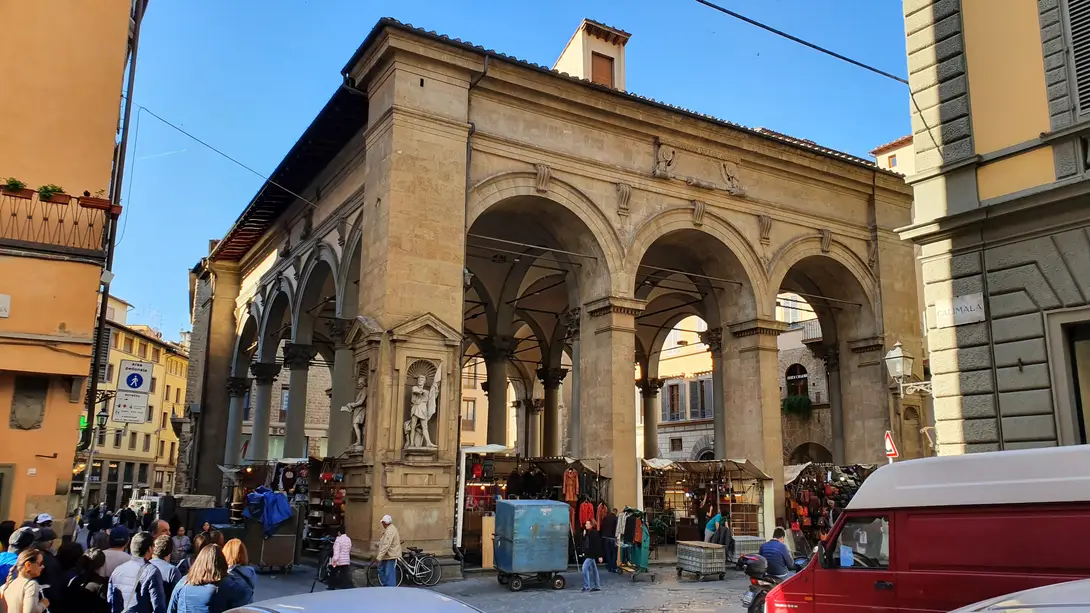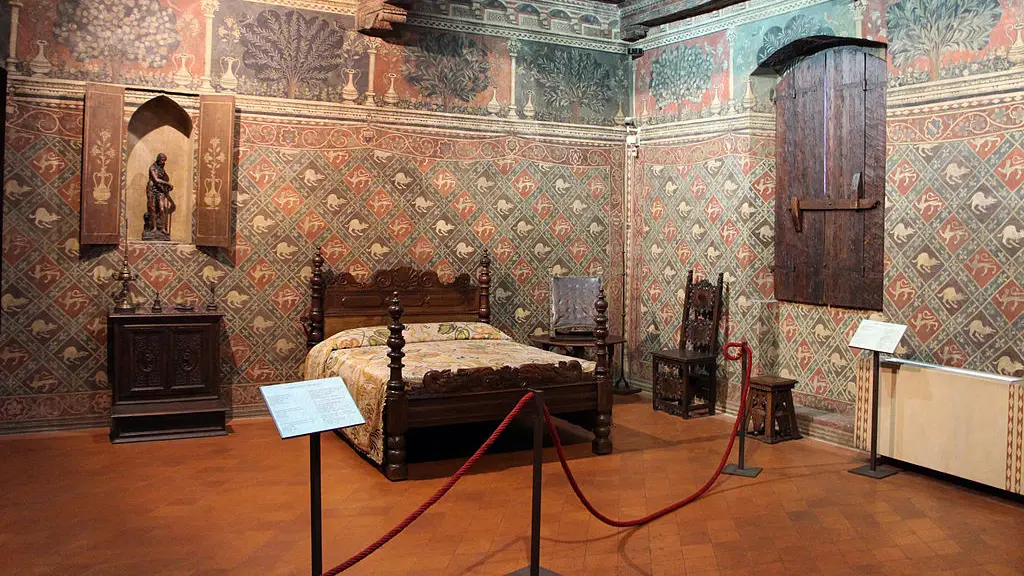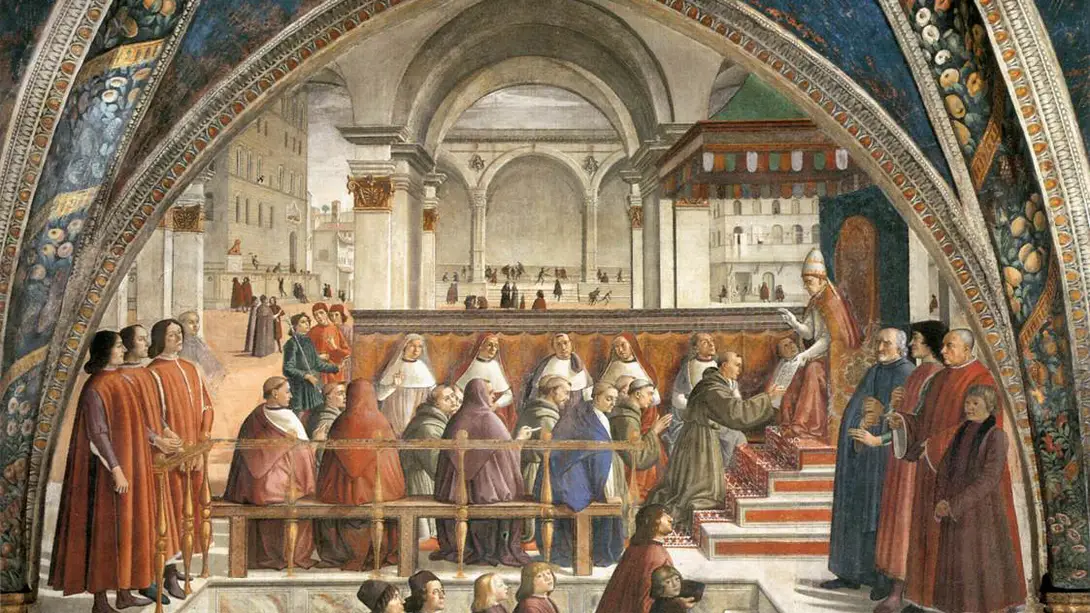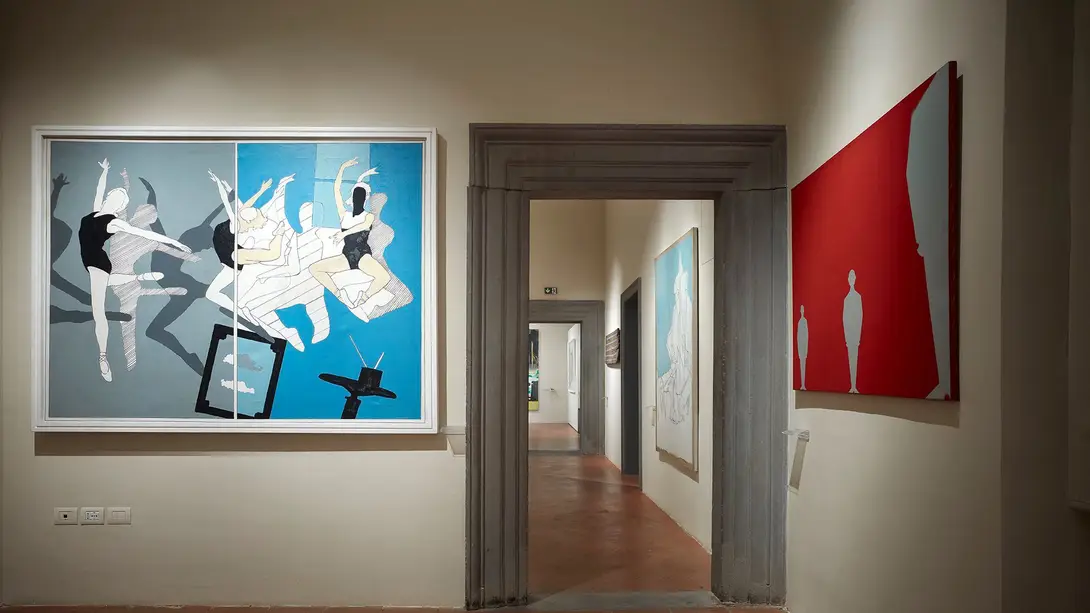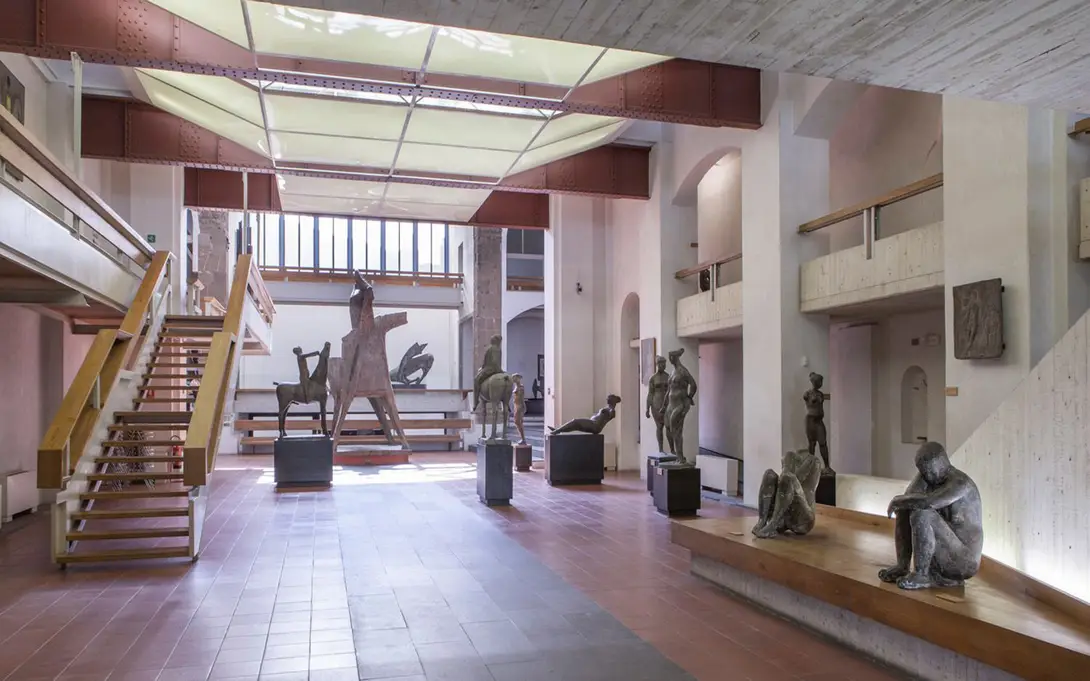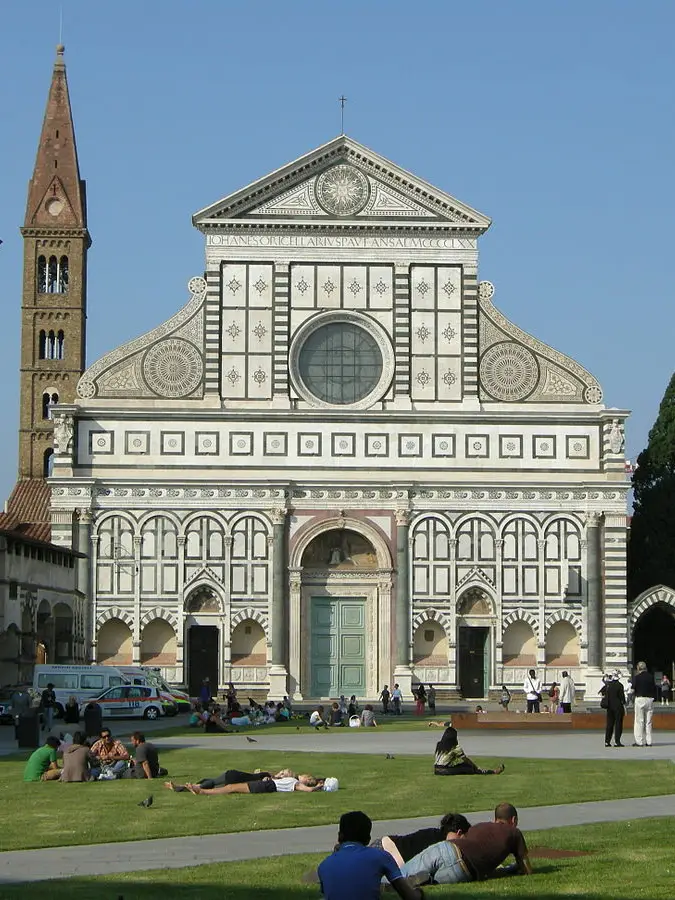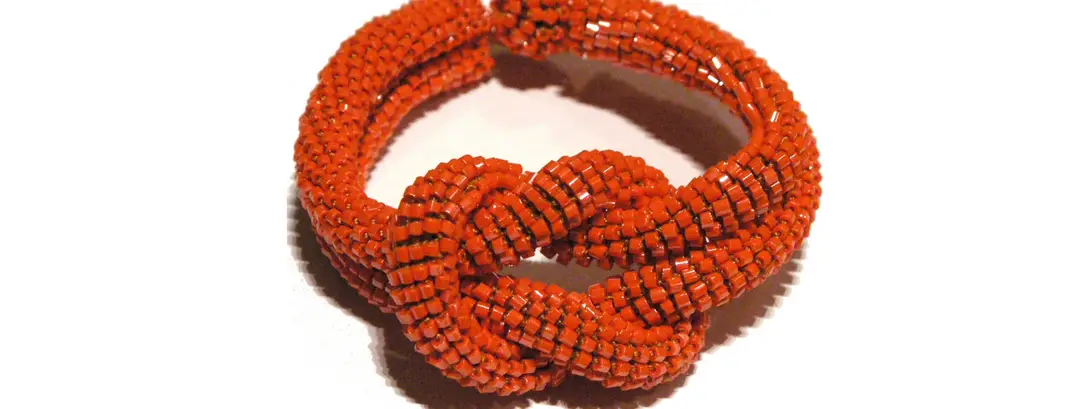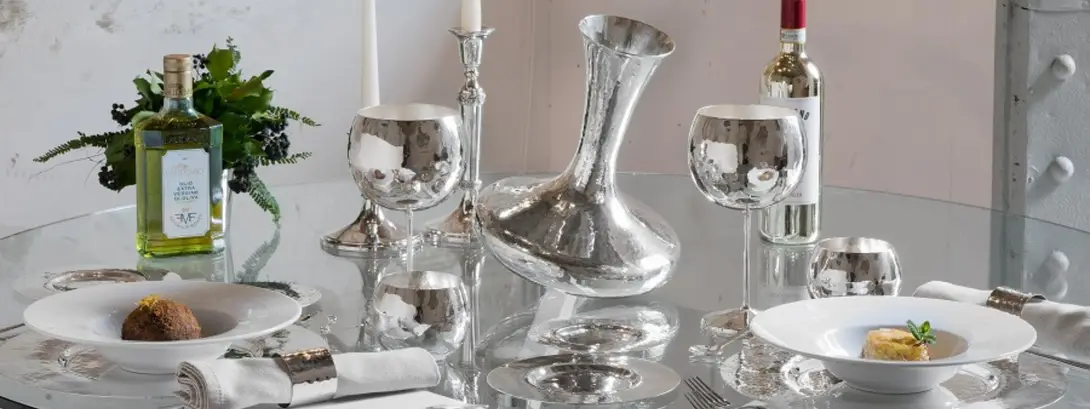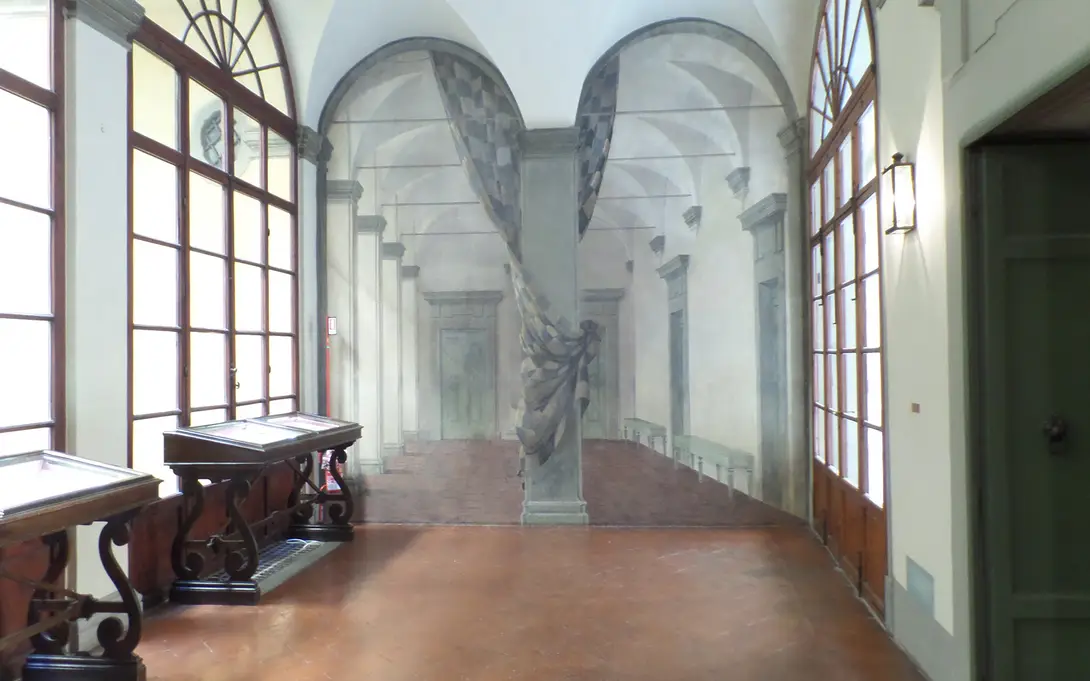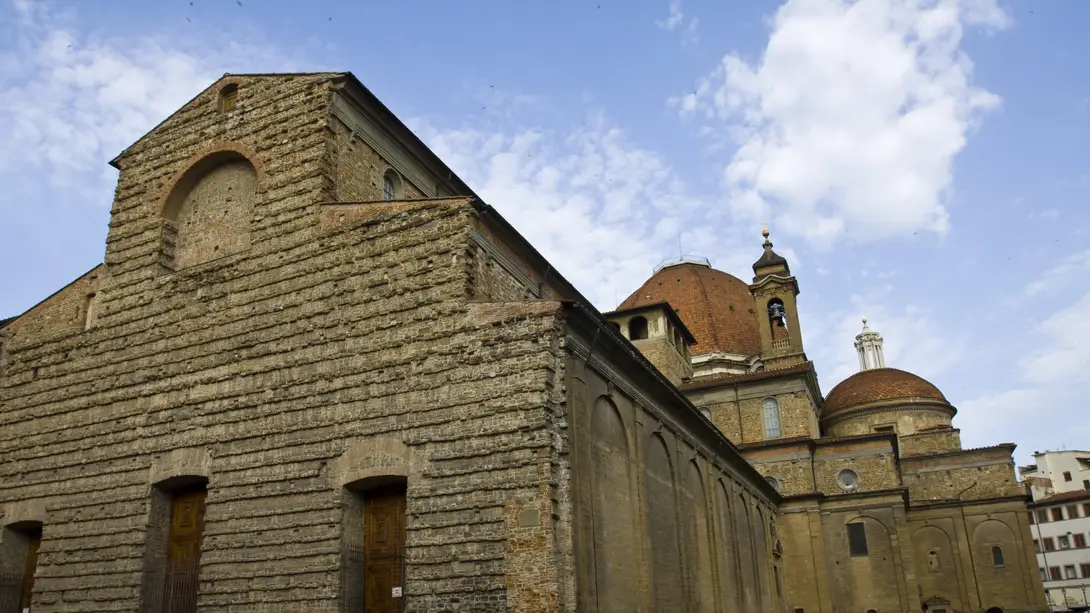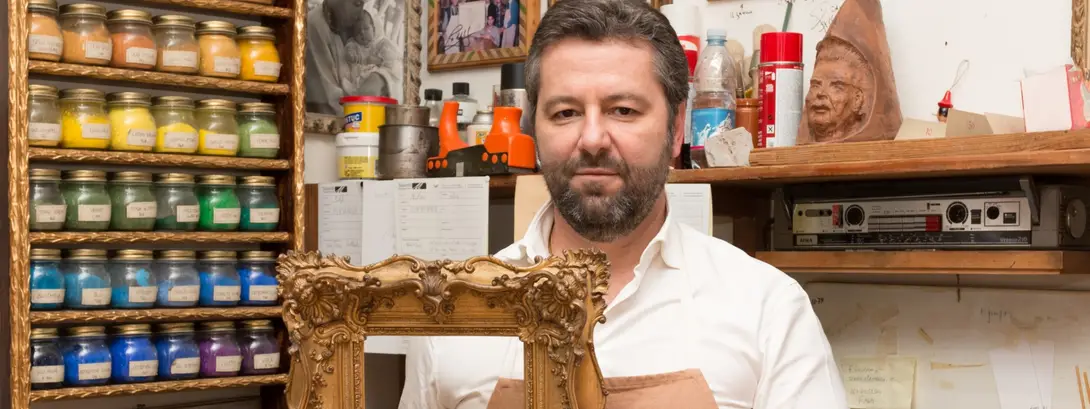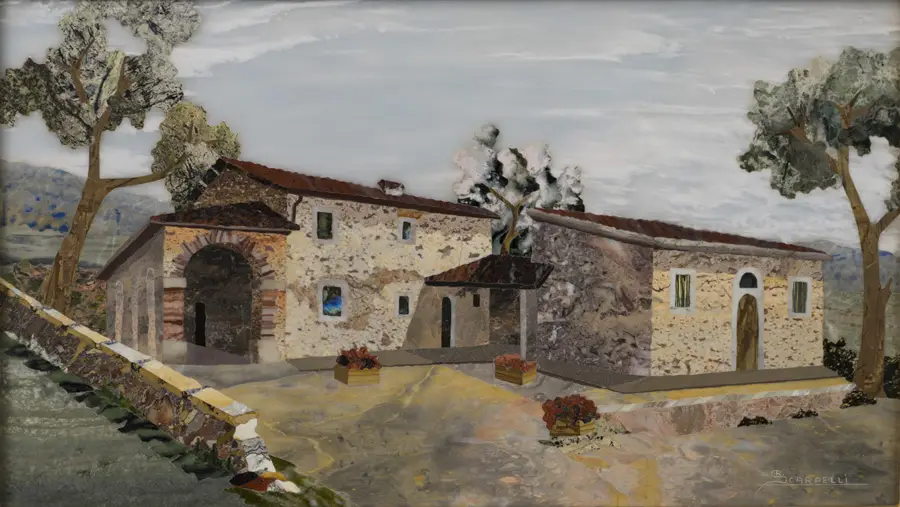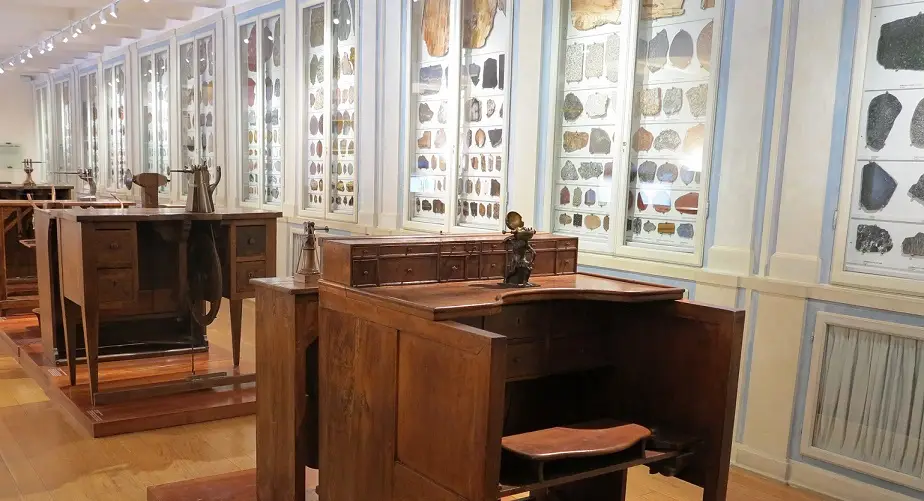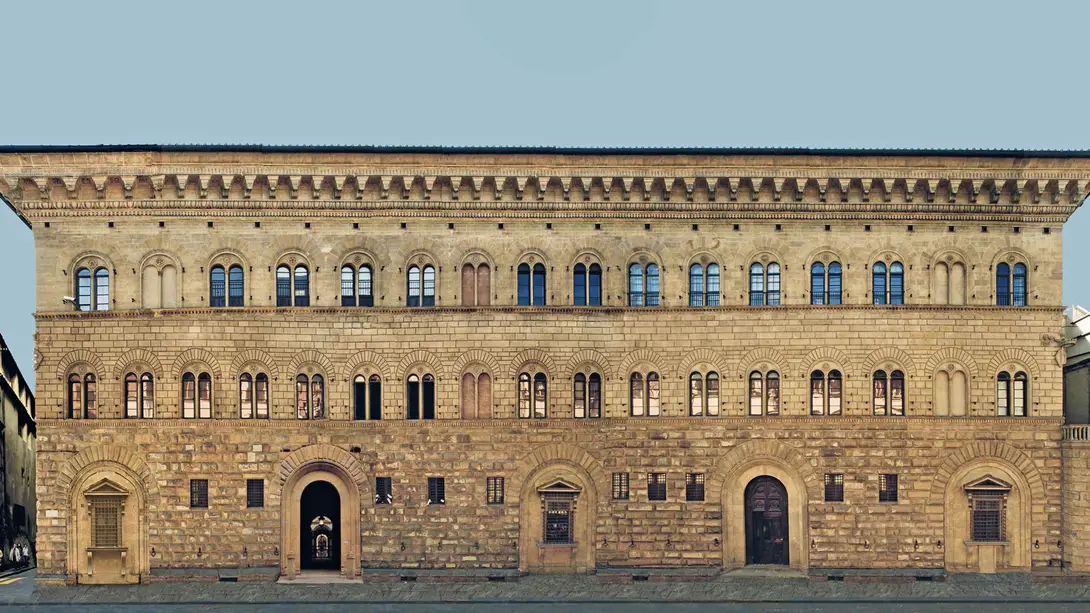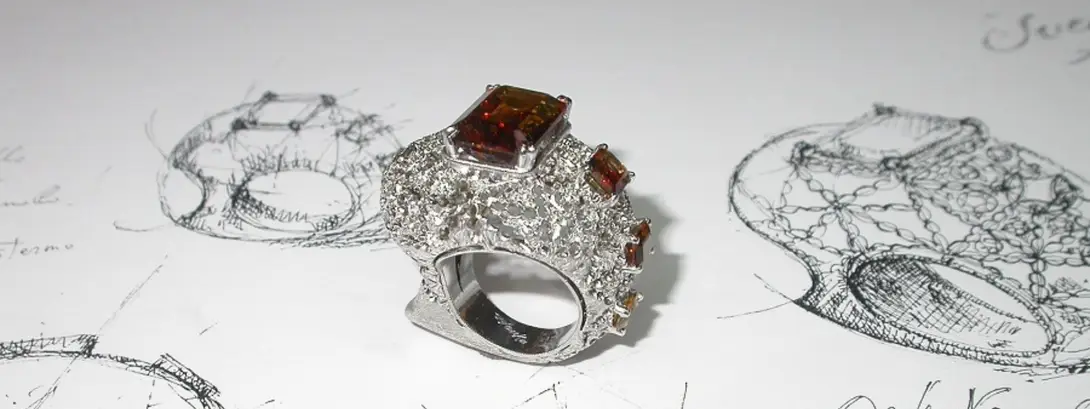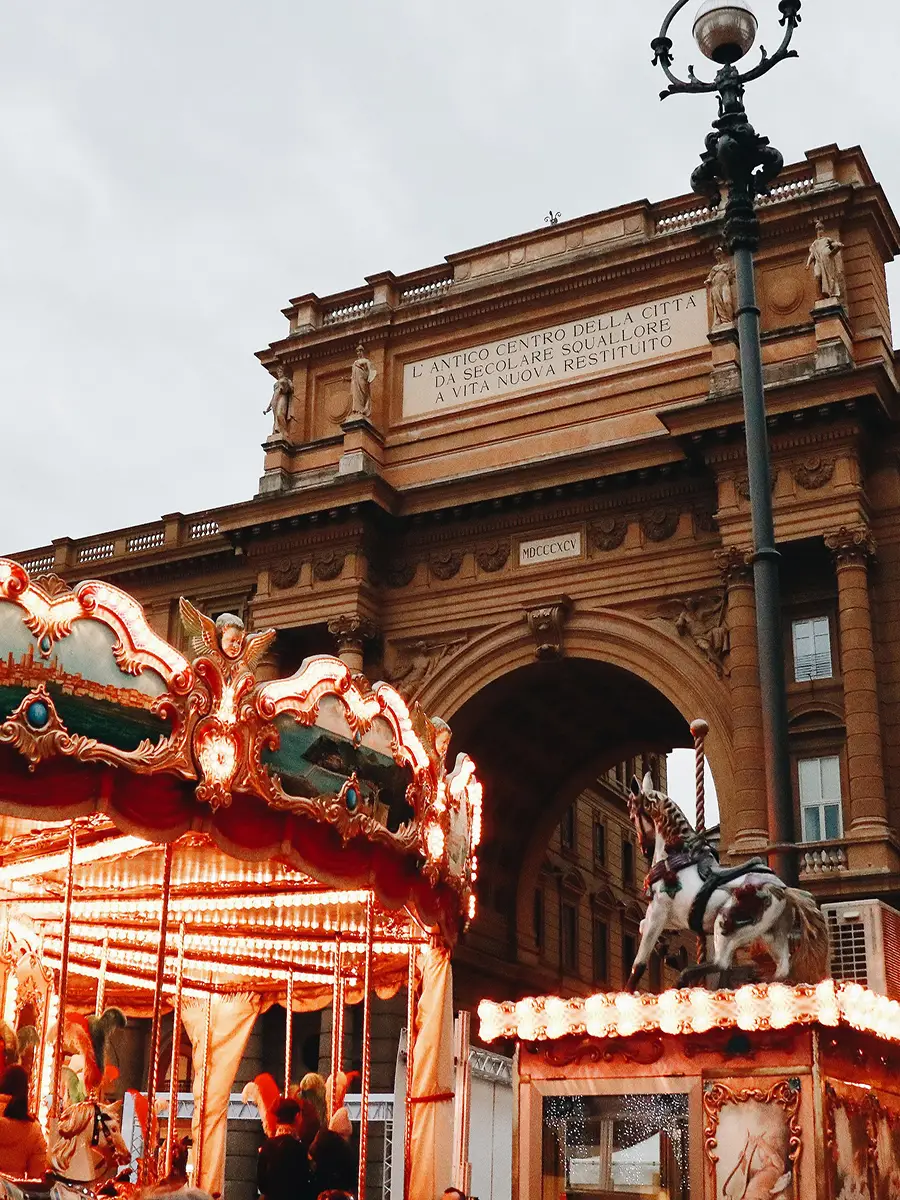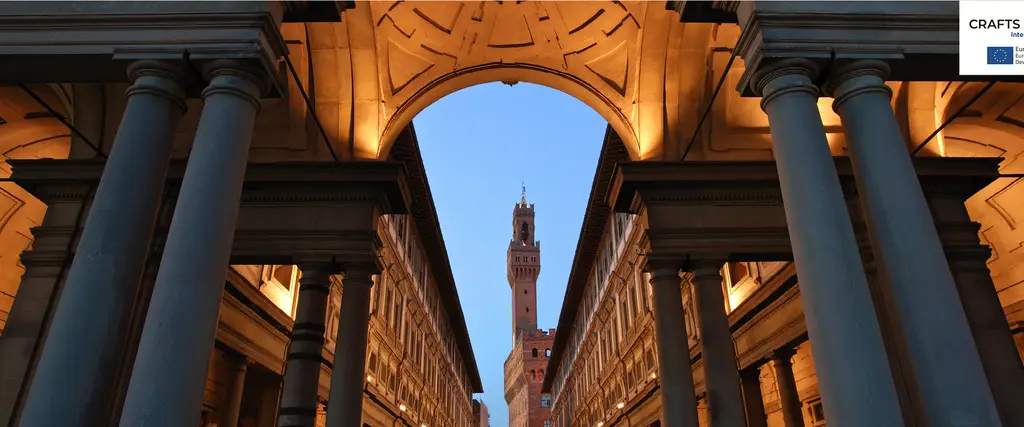
In the heart of Florence
In just a few steps, the great history of Florentine craftsmanship. The heart of Florence's art, culture, history and creativity can be found here expressed in a few select examples of excellent craftsmanship, included in the open-air museum that runs between Piazza Santissima Annunziata, Palazzo Vecchio and the Santa Maria Novella, with the Duomo at its center. In this well-known itinerary, alongside the masters of art and culture who have left their mark and transmitted their genius to every inch of the center, are artisans and craftsmen of equal caliber.
Let yourself be enchanted by the art of carving wooden frames, the clerks in semi-precious stones, the artifacts in glass beads, the perfumes, silvers and jewelry born of ancient Florentine traditions. Let yourself be tempted by the suggested artistic places, they are a bit unusual in the center of Florence!
This itinerary is part of the European Project Crafts Code
Comune di Firenze
The places
Stages
Spezierie Palazzo Vecchio
Spezierie Palazzo Vecchio Dott. Di Massimo has a mission: to create perfumes, high-quality natural cosmetics and food supplements aimed at restoring physical and mental balance. It creates refined, high quality products, conceived and perfected over time thanks to its knowledge and passion for nature, herbs, aromas, fragrances and the therapeutic properties of plants. All products are exclusively handcrafted in Italy for two generations. All formulas are developed and created directly in the company; the direct production of the products makes it possible to maximise the quality of the ingredients used and their concentration.
The production process is artisanal and allows for constant innovation, in full conformity with the brand values. Their cosmetics are distinguished throughout the world by the use of vegetable substances, the absence of paraffins, traditional chelating agents and synthetic antioxidants. The perfumes are inspired by the Florentine perfumery art born in Florence during the Renaissance with Catherine de'Medici. The supplements are all high titre and are notified to the Ministry of Health. Customer service and the care of every single relationship with customers and retailers is an integral part of the company's business.
Mercato del Porcellino
There are three names by which this place is known: Loggia del Porcellino (from the famous bronze animal - actually not a piggy but a wild boar - a copy of the seventeenth-century original by Tacca in the Stefano Bardini Museum), Loggia del Mercato Nuovo ("the new market" to distinguish it from the old one, which was located in what is now Piazza della Repubblica) and the Straw Market (traditional Florentine straw hats were sold there starting from the 19th century).
The architectural structure, the work of Giovan Battista Del Tasso (1550), is decorated in the corner niches with three nineteenth-century sculptures representing illustrious men from Florentine history: Michele di Lando, protagonist of the famous Ciompi Riots (the "minor" wool workers) of 1378; Giovanni Villani, well-known Florentine historiographer of the fourteenth century; Bernardo Cennini, pioneer of Florentine typography.
In addition to being a place dedicated to military functions, it was originally the site of the silk and other precious fabrics market. On the floor, in the center of the loggia, there is the so-called Scandal Stone, where insolvent debtors and traders were punished.
Today the Loggia hosts a tourist market (one of the most visited markets of Florence) selling mostly leather goods and souvenirs.
Museo di Palazzo Davanzati
Originally built in the mid-14th century for the Davizzi family and then acquired by the Davanzati in the 15th century, the palace is an extraordinary example of a 14th-century Florentine house, with some interesting interior architecture and mural decorations with geometric motifs that were typical of the age.
Furniture, paintings, tapestries and domestic objects give a good overall picture of what an upper-class Florentine home would have been like between the 14th and 17th centuries; there are also many paintings with secular and religious themes, sculptures and a collection of ceramics and majolicas from various manufactories. There is also one of the richest lace collections in Italy, displayed in a dedicated room on the third floor.
Chiesa di Santa Trinita
The Basilica of Santa Trìnita is one of the most important in the historical and artistic evolution of the city of Florence: it overlooks the homonymous Piazza Santa Trinita and also gives its name to the nearby bridge.
Founded in the 11th century, it was enlarged and transformed around 1250, obtaining the title of abbey in the 14th century. At the end of the sixteenth century, as part of the renovations following the Counter Reformation that the Medici Grand Dukes had promoted in the Florentine churches, Bernardo Buontalenti renewed its presbytery and rebuilt the convent. The complex thus assumed a sober yet imposing style. The facade, also by Buontalenti, with sculptures by Giovanni Caccini dates back to that same period.
Inside the chapels appear rich in works of art. The most interesting is the Sassetti Chapel, completely frescoed by Ghirlandaio, with scenes from the life of San Francesco and portraits of members of the Sassetti and Medici families.
Collezione Roberto Casamonti
The Roberto Casamonti Collection is located in the historic heart of Florence, at Piazza Santa Trinita 1 (Via de' Tornabuoni).
Set up on the noble floor of Palazzo Bartolini Salimbeni, the Collection is housed in a Renaissance building designed in 1520 by Baccio d’Agnolo and showcases works by the great masters of contemporary art, aiming to organize multidisciplinary exhibitions and events that enhance the dialogue between the arts.
The Casamonti exhibition is divided into two sections: the first includes works created from the early 20th century to the 1960s by artists such as Picasso, Chagall, de Chirico, Dalí, Kandinsky, Boccioni, Balla, Morandi, Burri, Fontana, and many others. The second section features works from the 1970s to the 2000s by artists of the caliber of Miró, Basquiat, Warhol, Kapoor, Kiefer, Boetti, Abramović, and many more.
Palazzo Strozzi
Palazzo Strozzi, with its imposing facades clad in pietra forte, is one of the most significant Renaissance palaces in Florence and a privileged venue for important art exhibitions.
One of the rooms on the ground floor houses a permanent exhibition that tells the story of Palazzo Strozzi. It was built in 1489 on behalf of Filippo Strozzi, one of the wealthiest merchants in Florence, who wanted it larger than Palazzo Medici. The construction remained unfinished when the Strozzi family, rebels against Medici rule, fell into disgrace in the 16th century.
The elegant courtyard, designed by Simone del Pollaiolo, is surrounded by arches resting on columns with Corinthian capitals; it is accessed through imposing portals that open in three directions (Via Tornabuoni, Via Strozzi, Piazza Strozzi).
The palace houses cultural institutions, including the National Institute for Renaissance Studies, but above all the Fondazione Palazzo Strozzi, the heart of cultural activity: in fact, the rooms are always the venue for important art exhibitions. In the spaces of the Centre for Contemporary Culture Strozzina, in the basement of the palace, initiatives dedicated to contemporary art take place.
Marino Marini Museum
The Marino Marini Museum, dedicated to the famous 20th-century Italian sculptor, is housed in the former church of San Pancrazio, where Renaissance lines are combined with modern renovation.
It is a monographic museum that houses 184 works by sculptor Marino Marini (1901-1980), arranged according to the artist's instructions in the choice of materials and natural lighting of the rooms. The works were created between 1916 and 1977. The exhibition, spread over the different levels of the church spaces, includes bronze and concrete sculptures of very different sizes, polychrome plaster casts and canvases, portraits and drawings. Exhibitions dedicated to various 20th-century and contemporary artists are periodically held in the crypt.
The Tempietto del Santo Sepolcro (Temple of the Holy Sepulchre) by Leon Battista Alberti, a Renaissance work with precious marble inlays, rich in allegorical meanings, is also on display.
Museo Novecento
The Museo Novecento, on piazza Santa Maria Novella in the premises of the former Leopoldine schools, is dedicated to 20th-century Italian art, presenting a selection of works from the civic collections which focuses on Italian art of the first half of the 20th century. Of great value is the Alberto Della Ragione collection, donated to the city of Florence in the aftermath of the 1966 flood, with artworks by Giorgio De Chirico, Filippo De Pisis, Gino Severini, Giorgio Morandi, Mario Mafai, Renato Guttuso, Felice Casorati among others.
The museum is completed with the exhibition of the legacy of Ottone Rosai, donated by his widow Francesca Fei and his brother Oreste to the Municipality of Florence.
The museum hosts many temporary exhibitions dedicated to contemporary artists in its ground floor rooms.
For the exhibition by American artist Haley Mellin, the courtyard was planted with around 300 native plants, based on research into the original layout and uses of the garden.
In addition to the permanent collection, the temporary exhibitions and the programme of the Cinema and Conferences Room enrich the activity of the museum with a thematic and multidisciplinary approach. Through its art mediation department the Museum daily arranges educational activities like workshops, guided tours for families, children, teenagers, adults and special audiences.
Piazza Santa Maria Novella
The creation of Piazza Santa Maria Novella dates back to the end of the 13th century, the beginning of the 14th century, in parallel with the construction works of the grandiose Dominican complex of the Basilica of Santa Maria Novella. The Preaching friars had arrived in Florence in 1219 and the small original church (located outside the 12th century city walls) had soon proved insufficient for the needs of the Order, which had become very popular and powerful. The new construction site, started in 1278, was completed only in the mid-14th century. The large external space in front of the facade becomes functional for preaching, the favored instrument of the Dominicans in the fight against heresy.
During the fifteenth century, the splendid façade of the Basilica was completed was created by Leon Battista Alberti in Renaisance style; of the same period is the Loggia, on the other side of the square, of Saint Paul Hospital, where currently the Museo Novecento is housed: an important collection of 20th-century Italian art and an excellent exhibition centre. The two sixteenth-century obelisks, at the ends of the square, were once used as "landmarks" for the Palio dei Cocchi (a horse-drawn chariot race), an ancient popular tradition of Florence.
With its elegance and grandeur, the square is one of the most evocative spaces in all of Florence, often the scene of important events in city life.
Aprosio & Co.
Aprosio & Co. is an Italian company based in Florence since 1993. It was born out of Ornella Aprosio's love for pearls and every single creation is the result of hours of work by skilled and experienced hands. Work and meditation, like Tibetan mandalas, allow them to combine Murano glass beads and Bohemia crystals until they become real or fantastic animals, fruits, flowers, insects, divertissements, always arousing surprise and admiration with the splendour of infinite combinations.
Brandimarte
Brandimarte was founded in 1955 by Brandimarte Guscelli. Today, the company's philosophy remains the same as the founder's: the use of silver in everyday life by exploiting its properties - antibacterial, antibiotic, heat conductor and flavour enhancer in beverages, as well as its inestimable aesthetic value.
Works, chisels, glasses, decanters, bracelets, rings, necklaces, earrings: each piece is unique and customisable.
Casa Martelli Museum
The palace is a fine example of an 18th-century upper-class residence and the collecting taste of its owners, and preserves the furnishings of the time. In 1738 the Martelli family transformed the house in a circulare path throught the rooms in order to make the family collection more enjoyable to visitors; today, it represents the last Florentine example of private collection constituted between the XVI and XVII centuries. The picture gallery contains paintings by Piero di Cosimo, Domenico Beccafumi, Salvator Rosa, Luca Giordano and 17th-century Nordic painters.
Basilica di San Lorenzo
One of the most important Florentine Renaissance building bound up with the history of the Medici family. The basilica consacreted by Saint Ambrose in 393 and rebuilt in a Romanesque form in the 11th century, was enlarged in 1418 by Filippo Brunelleschi to a commission by Giovanni dei Medici. The church is one of the finest expressions of Renaissance architecture and art.
Bottega d'arte Maselli
The business, established in 1955 as an art workshop, is part of the ancient Florentine tradition of artistic craftsmanship, boasting a national and international private clientele. Today the shop is a small artisan workshop that, thanks to its experience, passion and attention to detail, is able to offer servicesof impeccable quality for frame work; from the production of custom-made artistic frames of any model, designed by us or at the customer's request, to the realisation of gouache gilding in pure gold, silver-plating and mechanizing, to the restoration of wooden and pastel frames.
Among the most significant works we can mention the frame for the 'Grisoni' painting, kept at the Uffizi Gallery in Florence, the restoration for the Vatican City, the frame for Domenico del Ghirlandaio's 'Nativity', located in the altarpiece of the Basilica of S. Lorenzo in Florence, and other restorations for the same basilica.
Scarpelli Mosaici
The Scarpellis, Masters of Art, create mosaic works by continuing the ancient tradition of Florentine commesso in semi-precious stones. The masterpieces they create emerge from their profound experience in the selection of stones and the choice of colour tones that the materials offer in nature.
Scarpelli's masterpieces can be admired all over the world.
Museo dell'Opificio delle Pietre Dure
Opificio or manufacture: the museum focuses on the output and history of the Court Manufacture established by Ferdinando I dei Medici in 1588, which was specialized in pietre dure, magistral inlay of semi-precious stones.
It contains furniture (cabinets, tables, panels for the Chapel of Princes in San Lorenzo) decorated a commesso, that is with different-coloured stones cut and arranged so as to form pictorial compositions, or with painted stone or in scagliola (a very light kind of plaster).
The workshop exhibits include samples of materials, workbenches and tools. The Opificio still restores mosaics made from semi-precious stones.
Medici Riccardi Palace
Starting Thursday, 20 November 2025, the entrance to the Medici Riccardi Palace Museum will be temporarily moved to Via Ginori 2 to allow for the dismantling of the scaffolding on the façade. Both the entrance and exit of visitors will take place through the access at Via Ginori 2.
Palazzo Medici Riccardi plays a fundamental role in the history of the city of Florence.
Commissioned in 1444 by Cosimo il Vecchio, it was the residence of the Medici family on what used to be known as Via Larga (today Via Cavour) and is a fundamental model of Renaissance civil architecture. In addition to being the private residence of the Medici family, with personalities of the calibre of Lorenzo the Magnificent, the palace fulfilled a public function and welcomed prominent political figures.
The palace's monumental courtyard leads to the Chapel of the Magi, which was built to a design by Michelozzo and frescoed in 1459 by Benozzo Gozzoli with the famous Cavalcade of the Magi, a masterpiece of the early Renaissance characterised by a series of portraits of illustrious figures. On the altar is a copy of the original altarpiece painted by Filippo Lippi.
Purchased in the mid 17th century by the Riccardi, it has many rooms dating back to this period, such as the sumptuous Galleria degli Specchi, in whose vault, magnificently frescoed by Luca Giordano, the Apotheosis of the Medici Family, protectors of the Riccardi, is depicted. In the basement are exhibited the busts from the Roman era collected in the 16th and 17th centuries by the Riccardi family, as well as the archaeological itinerary rich in evidence from the Roman era to the Middle Ages.
The museum organises activities and workshops for families according to the age of the children and activities for schools.
Penko bottega orafa artigiana
Master goldsmith Paolo Penko, in his workshop in the heart of Florence, just a few steps from the Duomo, together with his wife Beatrice - an expert in gemology - and their son Alessandro, creates unique jewellery, made entirely by hand, according to the ancient techniques of the Florentine goldsmith tradition.
Unique and recognisable, the Penko style succeeds in harmoniously interweaving the beauty and quality of the material with the fascination of references to forms and symbols of Florentine painting and architecture.
A Paolo Penko object is not a simple piece of jewellery, but a harmonious union between past and present, between tradition and innovation, between creativity and know-how and, above all, it is capable of telling a story, of conveying a message and a content, merging it with a strongly glamorous soul.
Unique works created with the ancient techniques of the Florentine goldsmith's art. Creations born to satisfy the desires of an increasingly international clientele.
Jewellery that draws inspiration from the most ancient and precious soul of the city of Florence with its small and large geometries, spirals, volutes, friezes and all those shapes and lines of architecture and art that made Florence unique during the Renaissance and that still reflect their unchanged beauty today.
All the stages in the making of a piece of jewellery begin with the scrupulous choice of stones, their cut and colour shade, and then move on to shaping the precious metals using ancient gestures and techniques such as cuttlefish bone fusion, agemina, niello, cesoro and Florentine penkato. Techniques, still alive in our workshop, through which jewellery, silverware and works of sacred art come to life. Unique creations, also of innovative design but reflecting centuries of history and tradition.
Piazza della Repubblica
The vast square piazza della Repubblica is the result of the nineteenth-century demolition of the ancient city centre, at the time of Florence as the capital of Italy (1865-1871).
This was one of the most characteristic areas and over the centuries it had kept the medieval building fabric almost intact, with narrow streets and buildings leaning against each other. Here, together with medieval towers, artisan workshops, houses, there were also the Jewish ghetto and Vasari's Loggia del Pesce (the "Fish Loggia", later rebuilt in Piazza de' Ciompi); in the center was the Piazza del Mercato Vecchio (the "Old Market") built on the site of the Forum of the Roman city (the Column of Abundance marks the meeting point between the Cardo and the Decumanus, the two main Roman streets). The operation was presented as necessary to restore the hygienic and sanitary conditions of the area.
The background of the square is dominated by the monumental portico, the "Gallery" created by Vincenzo Micheli in 1895 - passing under the large central arch you can easily reach Palazzo Strozzi and via Tornabuoni - while on the sides the square is animated by numerous venues, including a series of important historical cafés once a meeting place for artists and writers.
